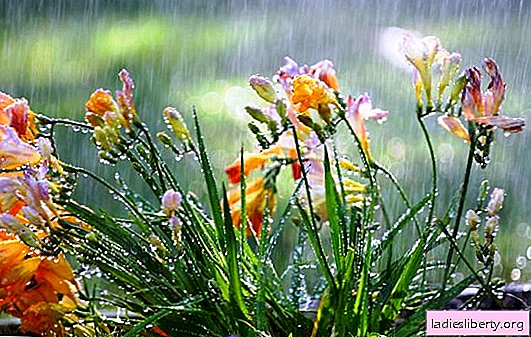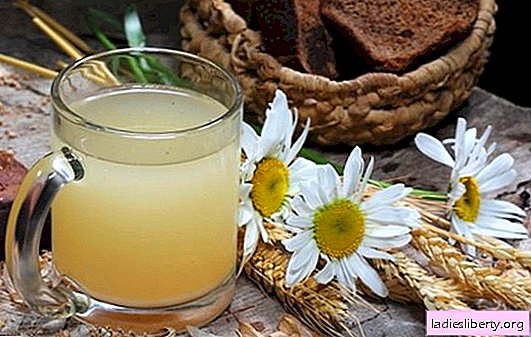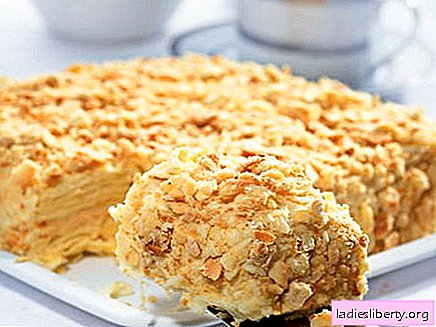
Freesia belongs to the iris family. She comes from South Africa. The culture uses only varieties of hybrid freesia. A plant 50-90 cm high with xiphoid green leaves 15-20 cm long, somewhat similar to gladiolus leaves. Funnel-shaped flowers with a delicate lily of the valley aroma are collected in inflorescences of 5-15 pieces. Their color is the most diverse - white, yellow, orange, red, blue, violet, often two-tone. Many varieties with double and semi-double flowers. Freesia is appreciated for the graceful shape of the flower and aroma, is good in cutting.
Cultivating freesia
This flower is bred both in the garden and in the house. Freesia is grown in greenhouses and greenhouses for cutting. You can drive flowers in the winter at home. When diluted in open ground for the winter, the bulbs are dug up and stored indoors.
Outdoor cultivation of freesia
When growing freesia in open ground, plants require a semi-shady, warm place.
The soil should be well-cultivated, loose and breathable. The composition is approximately the same - sand, peat, sheet land in equal quantities. Before planting freesia, the earth must be watered with a dark solution of potassium permanganate, and bulbs can be kept in potassium permanganate for 2-3 hours. These are good preventative measures against diseases.
Freesia is a plant of long daylight hours. You need to remember this and choose a place for landing, not obscured after dinner by other plants or buildings. Interestingly, freesia love a heap of land.
Germination of freesia bulbs

Freesia is propagated by seeds or vegetatively by bulbs.
During spring sowing (March - April), seedlings bloom in October. If sown later, the development cycle of freesia accordingly shifts, and flowers appear in winter or spring.
Planting freesia bulbs
The term for planting corms is April - May. They are planted after ten centimeters to a depth of five to ten centimeters. Flowering from spring planting of freesia with bulbs can be expected in August - September.
It is very important to complete planting work on time so that the plant has time to lay flower buds. It's okay if the temperature outside is cool. If the planting of freesia is delayed and work is carried out at +20 ° C and above, it will not bloom. An already formed inflorescence will dry out.
Outdoor Freesia Care
When grown in open ground, freesia must be regularly watered and fed.
• Plant bulbs in a flowerbed well lit by the sun.
• Provide plentiful regular watering.
• Bulbs sprout for a rather long time - about 3 weeks.
• After germination, watering is somewhat limited.
Watering
Freesia does not like drought, but she also has a negative attitude to waterlogging, although she likes high humidity. It is watered under the root so that the earth is moderately moist.
It is better to water before dinner, so that in the evening the greens dry out: if the plants remain wet for a long time, a fungal disease can develop.
The evening watering of freesia should be carried out at such a time that the leaves dry before night. Otherwise, lowering the temperature and wet leaves can cause damage to the flower by putrefactive bacteria.
Support
Tall, sometimes up to one meter, plants require support. This is an indispensable attribute of care for freesia. In greenhouses, for this purpose, a grid is stretched horizontally at a height of 20 cm from the ground. The second grid is placed twenty centimeters above the first. If the variety is tall, then a third is needed. Plants germinate through the net, which serves as their support.
By mid-July, freesia bushes grow to 40 cm and begin to form buds. Flowers bloom in August.
Top dressing
During budding, freesia is fed with a 0.2% solution of potassium or calcium nitrate.
Freesias bloom for a long time, revealing one flower after another. In mid-October, you can still admire the flowers in the garden or cut them for bouquets.
After all the flowers are cut, the plants are well watered and left dry without watering for several weeks before digging.
Bulb harvesting and storage
• First signal: foliage turns yellow.
• Second symptom: the main root of the plant is thinning. They make a test excavation, and if the main root is still juicy, then they wait until it dries into a thread.
• The aboveground part of the plants that has already begun to turn yellow is cut off, the bulbs are dug up and brought into the house.
Harvesting Freesia Bulbs

They are laid out on paper or newspaper and dried for several days, avoiding direct sunlight. Then cleaned of old scales and put in a cardboard box.
They must be kept warm in high humidity - otherwise the bulbs will dry. To comply with this condition, a container of water is placed next to the box. Temperature 29˚-31˚C maintained for 12-16 weeks. 2 weeks before planting, the temperature is reduced to 12˚ 13˚, but corms can be put in the refrigerator (where the temperature is about 5˚) for no more than a week.
Why does freesia not bloom?
Typically, the reason is the improper care of the freesia corms during storage. If you do not withstand the indicated temperatures, and even more so put the corms in the refrigerator for a long time, then they may not bloom. At the same time, the corms “freeze” (that is, the stems do not grow, and the plant seems to fall asleep), may not grow for several years at all, or they will bloom poorly, weakly.
For freesia not only to grow, but also to bloom, at the initial stage of cultivation, it needs a temperature within 15 °, and then it is desirable to smoothly raise it to 20-30 °. Therefore, it is necessary to calculate the optimal landing time for certain climatic conditions.
Violation of the temperature regime leads to stretching of the plants. It is expressed in the fact that the distance between the first and second flower increases.
The angle at which the inflorescence moves away from the peduncle must be straight or even blunt, and when pulled, it bends and becomes sharp.
At the same time, the inflorescence looks uneven, untidy, and it has to be rejected.
Freesia care in the room. Distillation
You can spend winter distillation by planting: corms in a drawer or a pot on the windowsill. In a small (15 cm deep) pot, 5-7 medium-sized corms will fit (with 7-8 cm of roots and a 5 cm layer of soil above the top of the corms). The planting period here depends on two factors: the temperature in the room and the date of the planned flowering.
The main thing is that during flowering the room should not be too hot. At the time of emergence of shoots should be no higher than 10˚-12˚, although 6˚-7˚ is enough, and during flowering no more than 20˚.
The stems of freesia are very fragile, do not hold themselves and fall and break without support.
When caring for freesia in the room, it is necessary to install a decorative rack or wire frame in the pots for support.
Freesia in a pot with a support

Corms, which were used for distillation in a pot, will either have to be thrown away, or in the warm season to grow in the soil.
For the windowsill, undersized varieties are more suitable, for example, Anyuta, Tenderness, Purple. Here they reach a height of 20-25 cm.











